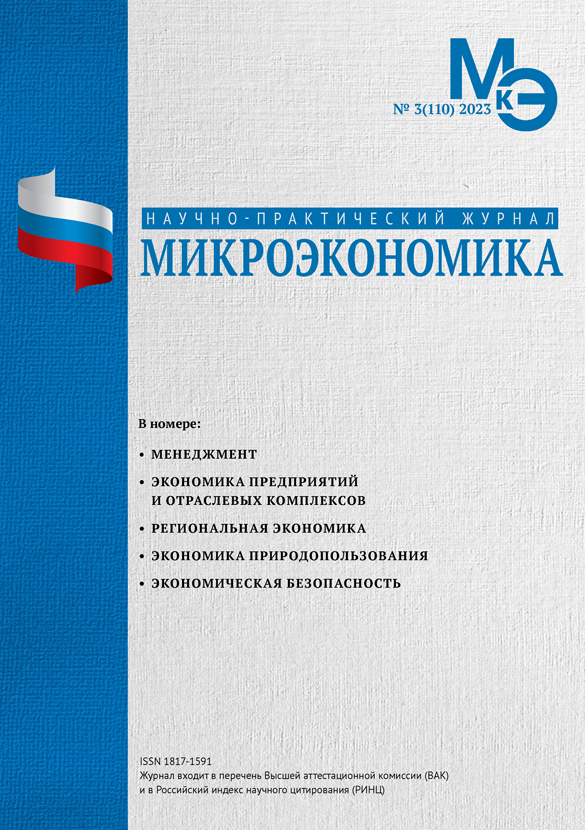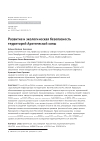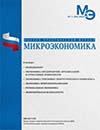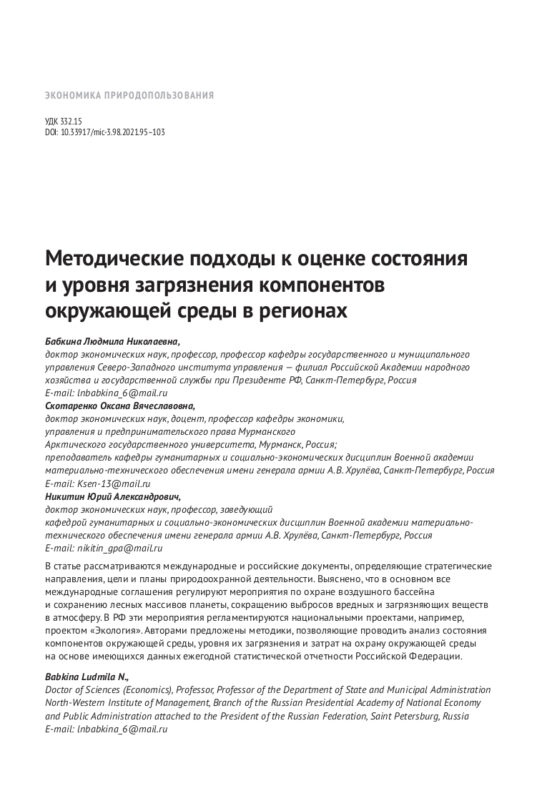Arctic zone territories development and their environmental safety
DOI: 10.33917/mic-3.110.2023.59-71
The article is devoted to creating new and improving existing infrastructure in the territories of the Arctic zone of the Russian Federation, ensuring the year-round operation of the Northern Sea Route as a promising international main waterway. The authors analyze the liquefied natural gas production plants, ports, and railways under construction on the coast of the seas of the Arctic Ocean as these objects create opportunities for increasing the volume of maritime transport and icebreakers, as well as the speed of goods delivery to the countries of the Southeast Asia and the Pacific basin. In addition, the facilities optimizing energy supply are studied as key impacts that improve the conditions and quality of life of the population in this area. The authors analyze the fundamental documents for the development of the Arctic zone, approved by the President and the Government of the Russian Federation. The article highlights dynamics of the population, average per capita cash income from 2005 to 2021 as the main factor contributing to the population stability and the main indicators from the annual state statistical reporting, that characterize the changes in the level of atmosphere and surface water pollution and determine the level of environmental safety of the Arctic zone territories of the Russian Federation.
References:
1. On the Fundamentals of the State Policy of the Russian Federation in the Arctic for the period up to 2035: Decree of the President of the Russian Federation of March 5, 2020. No. 164. URL: https://www.garant.ru/products/ipo/prime/doc/73606526/?ysclid=leipxu0360530940135
2. On the strategy for the development of the Arctic zone of the Russian Federation and ensuring national security until 2035: Decree of the President of the Russian Federation of October 26, 2020. No. 645. URL: https://base.garant.ru/74810556/?ysclid=leiptmnf9732603907
3. On the land territories of the Arctic zone of the Russian Federation: Decree of the President of the Russian Federation of May 2, 2014. No. 296 Retrieved from: https://www.garant.ru/products/ipo/prime/doc/70547984/?ysclid=leipqod76a520696147
4. On approval of the plan for the development of the Northern Sea Route for the period up to 2035: Decree of the Government of the Russian Federation of August 1, 2022. No. 2115-r. URL: https://www.garant.ru/products/ipo/prime/doc/405010751/?ysclid=ldj6si8gbn565996760
5. On the peculiarities of providing citizens with land plots that are in state or municipal ownership and located in the Arctic zone of the Russian Federation and in other territories of the North, Siberia and the Far East of the Russian Federation, and on amendments to certain legislative acts of the Russian Federation: Federal Law of 05/01/2016. No. 119-FZ. URL: https://base.garant.ru/71388648/?ysclid=leiq5wwuqg271926707
6. On production and consumption waste: Federal Law No. 89-FZ of June 24, 1998 (as amended on December 19, 2022. URL: https://base.garant.ru/12112084/?ysclid=leiq4enzyz155209384





